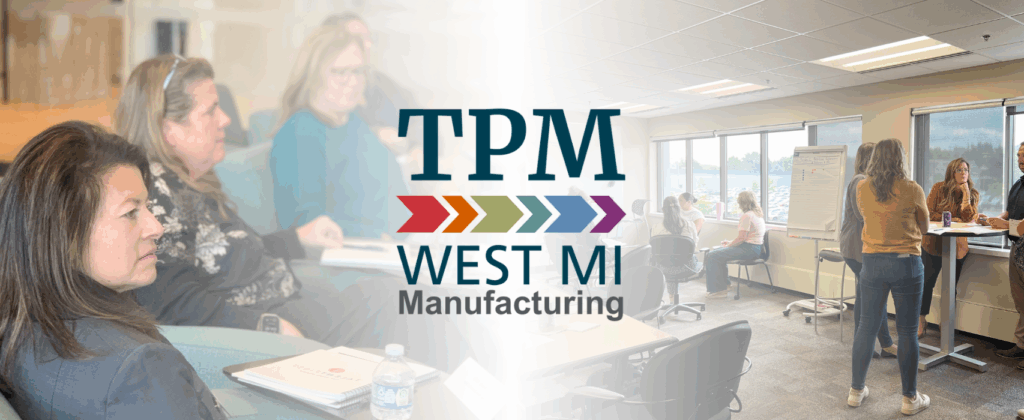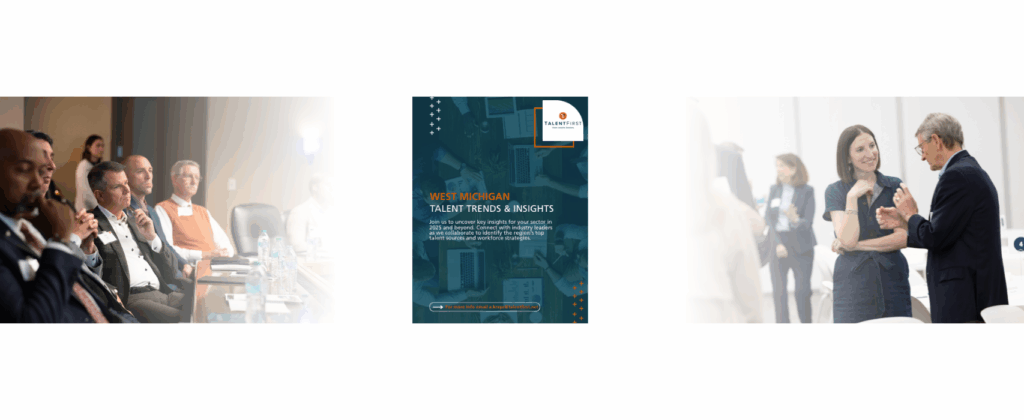Transformation has become a constant for employers of all types and all sizes. Successful transformation, however, is not nearly so universal.
The digital disruption of artificial intelligence is only part of the equation. Employers also are grappling with shifting market demands, demographics, and employee expectations. And at most organizations, few professional groups have a bigger responsibility in navigating these challenges than HR and DEI leaders.
Some of West Michigan’s top leaders in these roles gathered recently to share ideas, experiences and insights at the first gathering of TalentFirst’s HR Council.
The importance of their efforts was emphasized in an opening toast by Carly Smyly, TalentFirst director of Employer Talent Strategies & Engagement, who reminded the group that they “navigate a constantly changing landscape, including legal frameworks, industry changes, volatile political and market conditions, ever-changing technology, and 5 generations in the workforce.”
“And in the face of these challenges, you persevere. You drive innovation and growth and do your part in making West Michigan a top region for quality, diverse talent.”
The session, held at ADAC Automotive, was framed by a presentation from Joe Dettmann, Ph.D., principal and leader in People Advisory Services for EY, who noted that most business transformations don’t go well.
In a research collaboration with Oxford University, EY found that two-thirds of senior leaders have experienced at least one underperforming transformation in the past five years.
That research also found six drivers that lead to successful transformation by putting humans at the center of the process, Dettman said. EY defines these drivers as:
- Inspire: creating a vision that everyone can believe in
- Care: building a culture that embraces and encourages everyone’s opinion
- Build: using technology and capabilities to drive visible action quickly
- Empower: setting clear responsibilities and being prepared for change
- Lead: adapting and nurturing the necessary leadership skills
- Collaborate: finding the best ways to connect and co-create
Following the presentation, members of the HR Council broke into table discussions of each driver, sharing their individual experiences with each.
Leading the transformation to inclusion
One of the most critical transformations facing organizations today is the need to create an inclusive workplace culture. This contributes not only to organizational success, but is essential to our regional efforts to attract, develop and retain top talent.
That’s why we’re taking on this topic at our next event, Cultivating an Inclusive Team Culture, 8:30-10:30 a.m. Tuesday, June 6 at Grand Valley State University’s L.V. Eberhard Center, 301 W. Fulton St., in Grand Rapids.
Cultivating an inclusive workplace culture takes intention and strategy. It’s solidified through the small, everyday actions and interactions across your organization – so this this event is designed for people leaders at every level, from the frontline to the C-suite.
Our keynote speaker is Ken James, chief diversity officer for Muskegon Community College, and he will be joined by a panel of experienced practitioners from across West Michigan in discussing best practices, strategies & tactics people leaders can do to cultivate inclusivity within their team and the broader organization.
Sign up today and help be part of this critical transformation.
{{cta(‘42284b35-fa37-4def-8c06-7f087f480977′,’justifycenter’)}}


